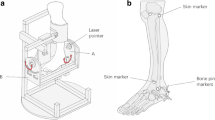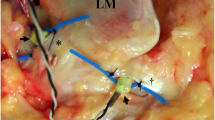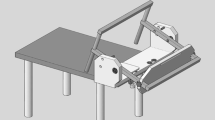Abstract
The aims of this study were to measure the forces in the anterior talofibular ligament (ATFL) and calcaneofibular ligament (CFL) and the motion in the tibiotalar and subtalar joints during simulated weight-bearing in eight cadaver ankle specimens. An MTS test machine was used to apply compressive loads to specimens held in a specially designed testing apparatus in which the ankle position (dorsiflexion-plantarflexion and supination-pronation) could be varied in a controlled manner. The forces in the ATFL and CFL were measured with buckle transducers. Tibiotalar motion and total ankle joint motion were measured with an instrumented spatial linkage. The specimens were positioned sequentially at 10° dorsiflexion, neutral, and 10° and 20° plantarflexion, and this sequence was repeated at 15° supination, neutral pronation/supination, and 15° pronation. Force and motion measurements were recorded in each of these positions with and without a 375 N compressive load simulating weight-bearing. From 10° dorsiflexion to 20° plantarflexion, all motion occurred in the tibiotalar joint. In contrast, the ratio of subtalar motion to tibiotalar motion was 3:1 for supination-pronation and 4:1 for internal-external rotation. Inverse loading patterns were observed for the ATFL and CFL from plantarflexion to dorsiflexion. Compressive loading did not affect CFL tension, but it magnified the pattern of increasing ATFL tension with plantarflexion. The largest increase in ATFL force was observed in supination and plantarflexion with a compressive load (76 ± 23 N), whereas CFL tension mainly increased in supination and dorsiflexion with a compressive load (109 ± 28 N). In conclusion, the results showed that the ATFL acted as a primary restraint in inversion, where injuries typically occur (combined plantarflexion, supination and internal rotation). Also, the subtalar joint was of primary importance for normal supination-pronation and internal-external rotation.
Similar content being viewed by others
Author information
Authors and Affiliations
Additional information
Received: 29 April 1997 Accepted: 25 July 1997
Rights and permissions
About this article
Cite this article
Bahr, R., Pena, F., Shine, J. et al. Ligament force and joint motion in the intact ankle: a cadaveric study. Knee Surgery 6, 115–121 (1998). https://doi.org/10.1007/s001670050083
Issue Date:
DOI: https://doi.org/10.1007/s001670050083




